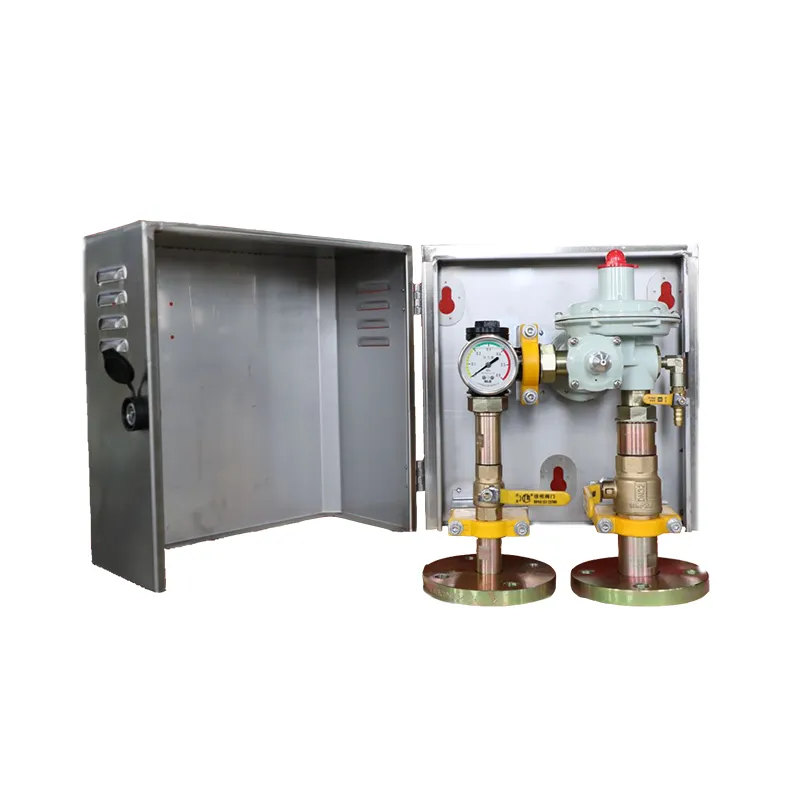
Nov . 21, 2024 02:15
Back to list
صمام منظم ضغط الغاز
Understanding Gas Pressure Regulators A Key Component in Gas Systems
Gas pressure regulators are crucial devices in various industries that handle gas supply systems, including residential, commercial, and industrial applications. Their primary purpose is to control and maintain a consistent output pressure of gas, ensuring safe and efficient operation of gas appliances and equipment.
What is a Gas Pressure Regulator?
At its core, a gas pressure regulator is a mechanical device that reduces the pressure of gas taken from a high-pressure source, such as gas cylinders or pipelines, to a lower, usable pressure. This is essential because many appliances, like heaters, stoves, and industrial burners, require gas at a specific pressure to function effectively and safely. If the gas pressure is too high, it can lead to equipment damage, unsafe operating conditions, or inefficient fuel usage.
How Do Gas Pressure Regulators Work?
Gas pressure regulators operate based on the principles of fluid dynamics and mechanical design. Typically, they consist of a diaphragm, spring, and valve mechanism. When high-pressure gas enters the regulator, it acts upon a diaphragm, which moves in response to the pressure changes. This movement adjusts a valve's position, allowing a controlled amount of gas to flow through while maintaining the desired outlet pressure.
The spring plays a vital role in this system by applying a counter-pressure against the diaphragm. If the flow of gas is interrupted or the demand decreases, the diaphragm moves back to close the valve, preventing a drop in pressure. Conversely, when the demand for gas increases, the diaphragm moves, opening the valve to allow more gas through, thus maintaining constant output pressure.
.
There are various types of gas pressure regulators, classified based on their application and design
صمام منظم ضغط الغاز

1. Single-Stage Regulators These are simple and suitable for low-pressure applications. They reduce the pressure in one step and are typically used in residential systems.
2. Two-Stage Regulators These provide more accurate pressure control and are used where a high inlet pressure needs to be reduced to a specific outlet pressure. They are commonly found in industrial applications.
3. Back Pressure Regulators Designed to maintain pressure within a system rather than provide a constant outlet pressure, these regulators are useful in gas distribution systems to control flow and pressure upstream.
Importance of Gas Pressure Regulators
The important role of gas pressure regulators cannot be overstated. They enhance safety by preventing dangerous overpressures that could lead to leaks or explosions. Moreover, they improve the efficiency of gas usage, as appliances operate optimally at specific pressures, leading to reduced operational costs.
Furthermore, regulators contribute to environmental sustainability. By ensuring that gas appliances operate efficiently, they minimize wastage and lower carbon emissions associated with gas combustion. This aligns with global efforts to reduce the environmental impact of energy consumption.
Conclusion
In summary, gas pressure regulators are fundamental components of gas supply systems that ensure safe and efficient operation of gas appliances and engines. By maintaining the appropriate pressure levels, they protect equipment, enhance performance, and contribute to safety and environmental sustainability. As industries strive for greater efficiency and safety in their operations, the significance of reliable and effective gas pressure regulators will only continue to grow. Understanding their function and importance can help users ensure proper installation, maintenance, and utilization of these critical devices in their systems.
Next:
Latest news
-
Safety Valve Spring-Loaded Design Overpressure ProtectionNewsJul.25,2025
-
Precision Voltage Regulator AC5 Accuracy Grade PerformanceNewsJul.25,2025
-
Natural Gas Pressure Regulating Skid Industrial Pipeline ApplicationsNewsJul.25,2025
-
Natural Gas Filter Stainless Steel Mesh Element DesignNewsJul.25,2025
-
Gas Pressure Regulator Valve Direct-Acting Spring-Loaded DesignNewsJul.25,2025
-
Decompression Equipment Multi-Stage Heat Exchange System DesignNewsJul.25,2025

